Jian Gao, International Centre for Bamboo and Rattan, China
Moso bamboo is a large, woody bamboo with the highest ecological, economic and culturalvalue of all the bamboo types and accounts for up to 70% of the total area of bamboo grown. However, the spatiotemporal variation role of moso bamboo shoot during growth period is still unclear [....] » Read More















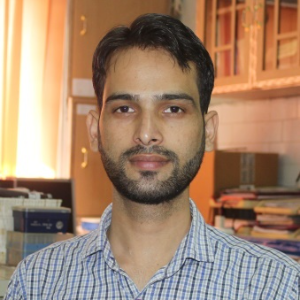
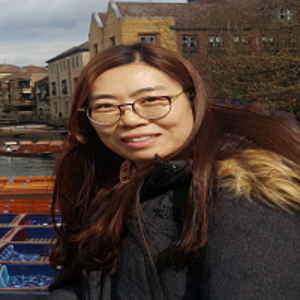




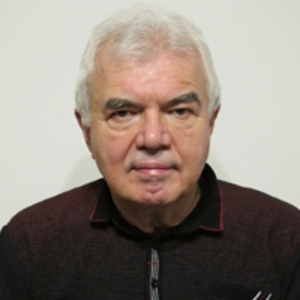

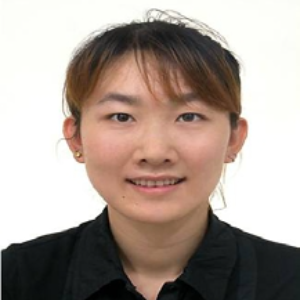























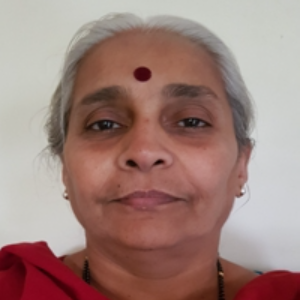









Title : New table grapes varieties obtained in Spanish breeding program ITUM-IMIDA for the world
Manuel Tornel Martinez, Instituto Murciano de Investigación y Desarrollo Agrario y Alimentario, Spain
Murcia is the Spanish region that produces and exports the largest amount of table grapes with some European countries consuming a large proportion of the production. 30 years ago the vine growers of our region cultivated local varieties with seeds, then the varietal panorama was [....] » Read More
Title : Vertically and horizontally transmitted genetic information in plant::Plant and plant::Microbe interactions
Jeff Bennetzen, University of Georgia, United States
Plants are inundated by seas of microbes in every tissue, in every environment and at every stage of development. Some of these microbes cause disease, while a few are known to enhance plant performance by preventing disease or by improving nutrient acquisition. Perhaps because t [....] » Read More
Title : Improving Identification of Plant Pathogens by Molecular Analysis
Mohammad Babadoost, University of Illinois, United States
Using molecular analysis has helped to accurate identify plant pathogens and determining variation among their isolates. We have used molecular methods to identify species and variations among their isolates of pathogens causing cucurbit powdery mildew, Phytophthora blight of pep [....] » Read More
Title : Cullin 3 Plant E3 Ligases: A perspective on improving agricultural traits by controlling protein stability
Hanjo Hellmann, Washington State University, United States
Plant development depends on a complex and flexible regulatory network that integrates environmental cues with specific developmental programs. A mechanism that provides plants with the ability to quickly and precisely respond is given by the ubiquitin proteasome pathway. Within [....] » Read More
Title : Two mechanisms of lincosamide tolerance function as nuclear and plastid markers in higher plants Massimo Bosacchi
Massimo Bosacchi, KWS Gateway Research Center, United States
Lincosamide antibiotics inhibit the regeneration of plants in tissue culture. Resistance to lincosamides can be conferred by a mutation that modifies the ribosomal target site in the plastid genome, or by a transgene that encodes detoxification activity. We exploited [....] » Read More
Title : Rice genome editing: a contribution to climate change mitigation and achievement of food security in Costa Rica Marta Valdez-Melara
Marta Valdez Melara, The University of Costa Rica, Costa Rica, United States
Abiotic factors, such as drought, salinity, and high temperatures are limiting agricultural production. Also, under the pressure of rapid population growth, climate change and evolution of agricultural pests and diseases, new genome-editing technologies are the next green revolut [....] » Read More
Title : Cultivation, Market and Uses of Nepal’s Medicinal and Aromatic Plants: Reflections on Local and National Policy
Joel T Heinen, Florida International University, United States
Nepal is a least-developed land-locked country with spectacular scenery and very high species diversity of many taxonomic groups. It is a center of adaptive radiation for many animal and plant families. The country boasts over 2,500 species of non-timber forest produc [....] » Read More
Title : Glomalin content of soil in relation to soil organic carbon under long term fertilizer studies in finger millet – maize cropping system
Basavaraja P K, University of Agricultural Sciences, India
An experiment conducted in an ongoing Long Term Fertilizer Experiment at Zonal Agricultural Research Station, UAS, GKVK, Bengaluru, Karnataka, India to study the dynamics of soil organic carbon and glomalin content of soil under finger millet-maize cropping system. Glom [....] » Read More
Title : Trichome formation and insect tolerance in tomato
Wei Deng, Chongqing University, India
Tomato trichomes, with unicellular and multicellular types, function as mechanical and chemical barrier against pests. Knock-down and over-expressed lines of SlARF4 were obtained to study the function in trichome formation in tomato. SlARF4-up-regulated plants exhi [....] » Read More
Title : Population status, soil properties and microbial colonization in Himalayan Silver Birch (Betula utilis D. Don)
Khashti Dasila, G.B. Pant National Institute of Himalayan Environment and Sustainable Development, India
The Himalayan silver birch (Betula utilis D. Don), commonly known as bhojpatra, is a multipurpose and broadleaved deciduous tree. It grows up to 4500 m asl and represents one of the dominant species of the tree line in Indian Himalayan region (IHR). It often grows in associa [....] » Read More
Title : Qualitative analysis and anti-bacterial investigation of Plumbago zeylanica
Arpita Roy, Delhi Technological University, India
Plumbago zeylanica commonly known as ‘Chitrak’ is a medicinal plant which contains a wide range of phytocompounds like flavonoids, alkaloids, napthoquinones, saponins, steroids, tannins, tri-terpenoids, etc. Utilization of in-vitro culture has an a [....] » Read More
Title : Evolutionary epigenomics of mangroves reveals the homeostatic role of gene body methylation in stress adaptation
Tian Tang, Sun Yat-sen University, China
DNA methylation plays an important role in plant stress responses whereas little is known about its role in long-term stress adaptation. In this study, we used mangroves well-adapted to tropical intertidal environments as a model system to understand the role of gene body methyla [....] » Read More
Title : Precision Nitrogen Management Through Crop Sensors on Growth and Yield of Aerobic Rice (Oryza sativa L.)
Mudalagiriyappa, University of Agricultural Sciences, India
Aerobic rice is grown in well drained, non-puddled and non-saturated soils just like wheat and maize. Experimental results showed that water requirement of aerobic rice was 30 – 50 % less than flooded system which yields almost same as obtained in case of transplanted rice. [....] » Read More
Title : Towards C4 rice; Overexpression of C4 genes in Arabidopsis thaliana and Oryza sativa Enhances Photosynthesis, Plant Productivity and Water Use Efficiency
B C Tripathy, School of Life Sciences, India
Plants with C4 photosynthesis are not only efficient in carbon assimilation, but they also have an advantage under unusual growth conditions. In C4 photosynthesis, the primary CO2 fixation is catalyzed by phosphoenolpyruvate carboxylase (PEPC). It is shown that overexpressio [....] » Read More
Title : Massive Growth of Super Dwarf Rice Plant in A Fully Closed Type Plant Factory for Poly Lactic Acid Production
Haruhiko Murase, Osaka Prefecture University, Japan
A natural strain of dwarf rice (Oriza rufipogon G. subsp. nunus, M. N.) is discovered. It is just ordinary rice except its plant length. The length of the rice plant is about 20 cm. Since the size of the discovered rice plant is so small, those conventional m [....] » Read More
Title : In vitro multiplication of plum cultivars (Prunus domestica L.)
Jiri Sedlak, Research and Breeding Institute of Pomology Holovousy Ltd, Czech Republic
In 2016, a project has been started to preserve the diversity of older plum cultivars grown on the territory of the Czech Republic. The purpose of this study was to develop an efficient in vitro system for rapid propagation of plum explants as an initial plant material for sanita [....] » Read More
Title : LED technological possibilities: tool for management of metabolic changes in microgreens
Giedre Samuoliene, Giedre Samuoliene-Lithuanian Research Centre for Agriculture and Forestry, Lithuania
Owing to high nutritional value and improved bioavailability of essential elements, microgreens are promising targets for nutrient enrichment using technological aspects of light-emitting diodes. This study determines changes in metabolism of certain prebiotic carbohydrate (hexos [....] » Read More
Title : Regeneration strategies in native woody species from disturbed South American dry tropical forests: the of aerial bud bank and soil seed bank
Sandra Josefina Bravo, National University of Santiago del Estero, Argentina
The resilience of dry tropical forests is one of most central goal for scientists, environmental managers and politicians in South American countries due to the climate and land-use changes and to the great human population living to expenses forest resource at these latitudes. S [....] » Read More
Title : Green algae Cladophora in the Crimean hypersaline waters as an ecosystem engineer and valuable resource
Nickolai Shadrin, A O Kovalevsky Institute of Biology of the Southern Seas (IBSS), Russian Federation
Hypersaline waters are among the most extreme habitats on Earth. To exist in such harsh environment organisms must develop different adaptations including biochemical. Due to this they have unique components in biomass. Cladophora spp. may reach high biomass and play a [....] » Read More
Title : Plants and radionuclides: from hazard to biotechnology
Pierre Chagvardieff, CEA, France
Plant nutrition takes off various minerals from the soils; these minerals are necessary to growth but in some cases these minerals are radioisotopes of essential elements but may be also exotic elements derived from industrial activities. The biological responses of plants to rad [....] » Read More
Title : Plant proteomic responses to signal compounds lipo-chito-oligosaccharide and thuricin Sowmyalakshmi Subramanian
Sowmyalakshmi Subramanian, McGill University, Canada
Lipo-chitooligosaccharides (LCO) and thuricin 17 (Th17) are bacterial signal compounds secreted by the rhizosphere bacteria of soybean, Bradyrhizobium japonicum 532C and Bacillus thuringiensis NEB17. At femtomolar concentrations these signal compounds promote [....] » Read More